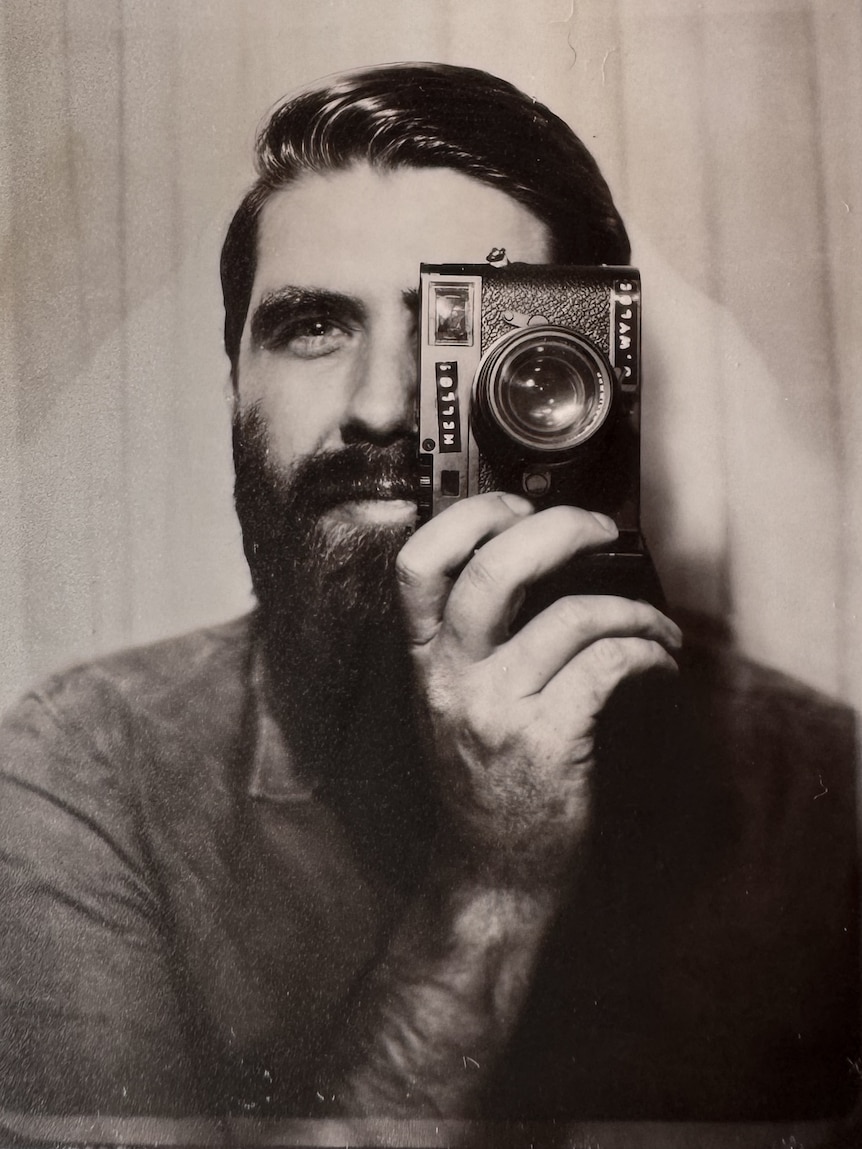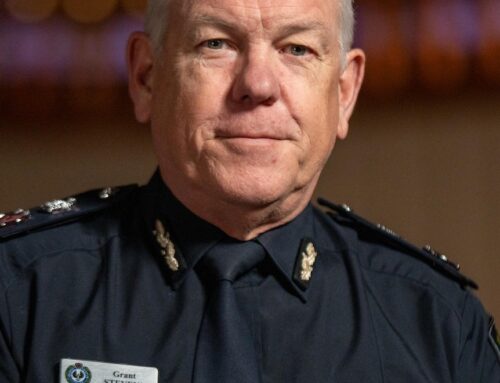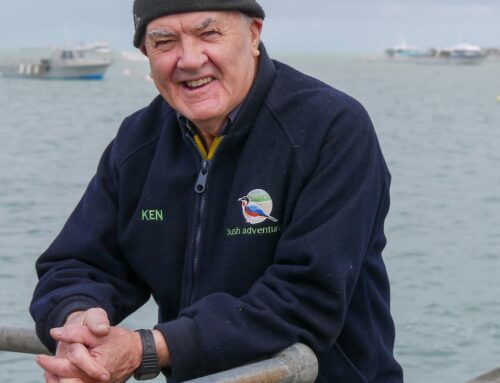In the days of digital photography and smartphones, film photography is now just a memory for many people, something to be explained to disbelieving children who can’t believe you had to wait days to get your photos after dropping them off at the local shop.
Or that you could only take 24 or 36 precious shots.
For others though, the appeal of film endures and the availability of second-hand camera and lenses is drawing more new users who are keen for the look and experience of photography in the slow lane.
Nostalgic appeal
Benny Wylde is an in-demand wedding and elopement photographer who shoots against the backdrop of South Australia’s picturesque hills and coasts and in the city.
He uses both film and digital photography and says there is a growing demand among his clients for photographs captured on film.
Mr Wylde said while there were some “pretty convincing” filters to try to add an analogue feel to digital photographs, there were still differences.
“Just the way film handles light. It’s still different to a digital sensor.
“A lot of character comes from the old lenses that the film cameras have.”
“You’ll see different artefacts and the way a lens will flare will be different compared to a modern digital camera. Film really loves colour.”
Mr Wylde learnt to develop his own film back in high school but now sends it to be developed, partly due to concerns about exposure to the chemicals involved and the difficulty in safely disposing of them in a home studio.
“Film kind of died off after about 2010 and then in around 2020 it really started to pick back up again,” he said.
Mr Wylde uses a range of cameras manufactured from the 1970s to 1990s.
He said it was difficult to choose a favourite but if he had to it would be his “iconic” Hasselblad 500cm.
Mr Wylde said the Super 8 motion picture camera, to capture video with a nostalgic flavour, was also making a comeback.
“It’s pretty easy to use; it’s just point and shoot, really. It just has that nostalgic appeal.
“People like that it feels like an old movie, but it’s them.”
Camera collectors
Don Cannan from the Goolwa Camera Club is a keen photographer and judge, helping to organise regular exhibitions across the Fleurieu Peninsula.
He has about 450 cameras in his collection. Most are film and now, ornamental.
He laughs when asked if he has also been tempted to go back to the days of film photography.
“No, first you’ve got to find a battery for them, load up the films. I’ve done all that.
“I’ve had enough trauma with being late up at night with developing.”
He said, however, there were a few members of the club who were drawn to the “real film look”, and that his grandson was currently travelling overseas with a friend, recording their trip on an old Pentax film camera.
“I’ve pulled out my old developing equipment in case they want to do it themselves when they get back.”
Impressive as Mr Cannan’s camera collection is, it is dwarfed by that of Steve Laurent.
“I don’t count them anymore; I stopped a few years ago when I got to over 2,000,” Mr Laurent said.
“I still keep buying them.”
Mr Laurent works at Photoco in the Adelaide Central Markets, where his boss Paul Bulley described him as a great employee but also one of the shop’s best customers.
The oldest camera in his collection dates from 1894 and he still uses it when he can.
“It’s just a different look, a different feel and it’s the fun of using the old cameras.”
Slowing down to think about your photo
Mr Laurent said pictures from film blended better across the depth of the picture.
“Digital can equal that now but in the early days they were horrible,” he said.
“They literally looked like the layers were stacked on top of each other.”
The store, opened by Mr Bulley’s grandparents in the 1960s, once processed 100 rolls of film a day.
Mr Bulley said that dropped to just a few a day about 15 years ago but that demand was growing again.
Only about 20 per cent of customers want physical prints, with the rest asking for digital copies to be emailed to them and the negatives destroyed.
“Definitely the younger generation are getting into it,” Mr Bulley said.
“Only having 36 photos [on a roll]. You have to slow down and think about your photo.”
He said for people starting out it was also the quality of images that could be achieved from the combination of using top-range film with high-resolution scanning.
“You could get an old rangefinder camera for $100, with a very sharp, old German lens.
“With $20 film, you could do a print the size of the wall of this shop. Razor sharp.
“To get that quality from a digital camera you need to spend $10,000.”
Film makes comeback
Mr Bulley said many of those who brought old cameras were keen to go beyond point and shoot and learn the theory of photography.
A yearly expo at the market, bringing visiting photographers, has seen more and more demand for workshops about shooting with film techniques.
“There’s even one [talk] on shooting fashion photography with film camera this year,” Mr Bulley said.
So does he still use film himself?
“Definitely,” he said.
“I’ve got two little cameras I take on holidays.
“The biggest thing happening this year in photography? This [Pentax] camera that is 40 years old is just being remade. Brand new. The hype around it has been amazing.
“To see big companies reinvesting in brand new cameras, it’s pretty exciting.”
Get our local newsletter, delivered free each Friday




